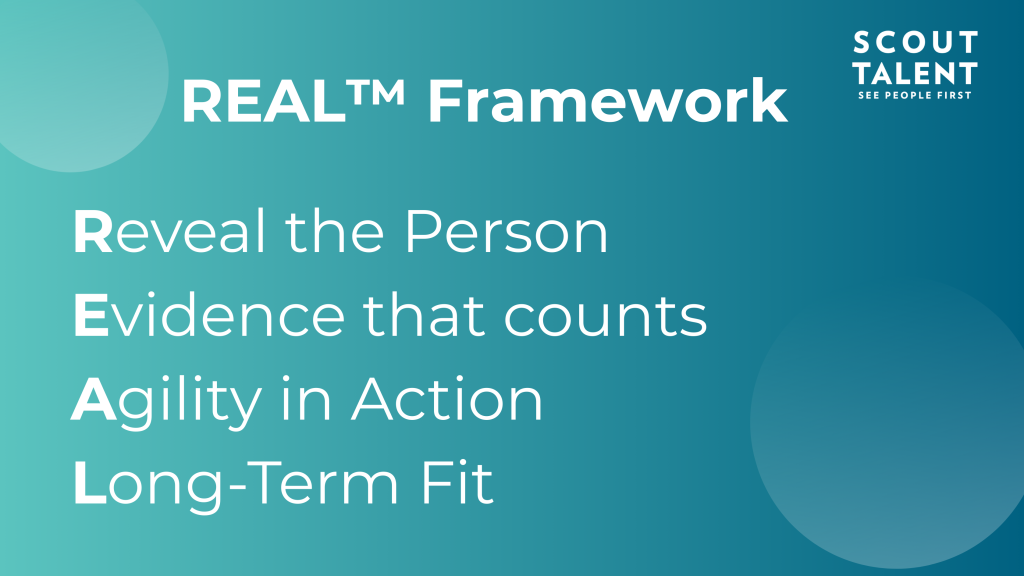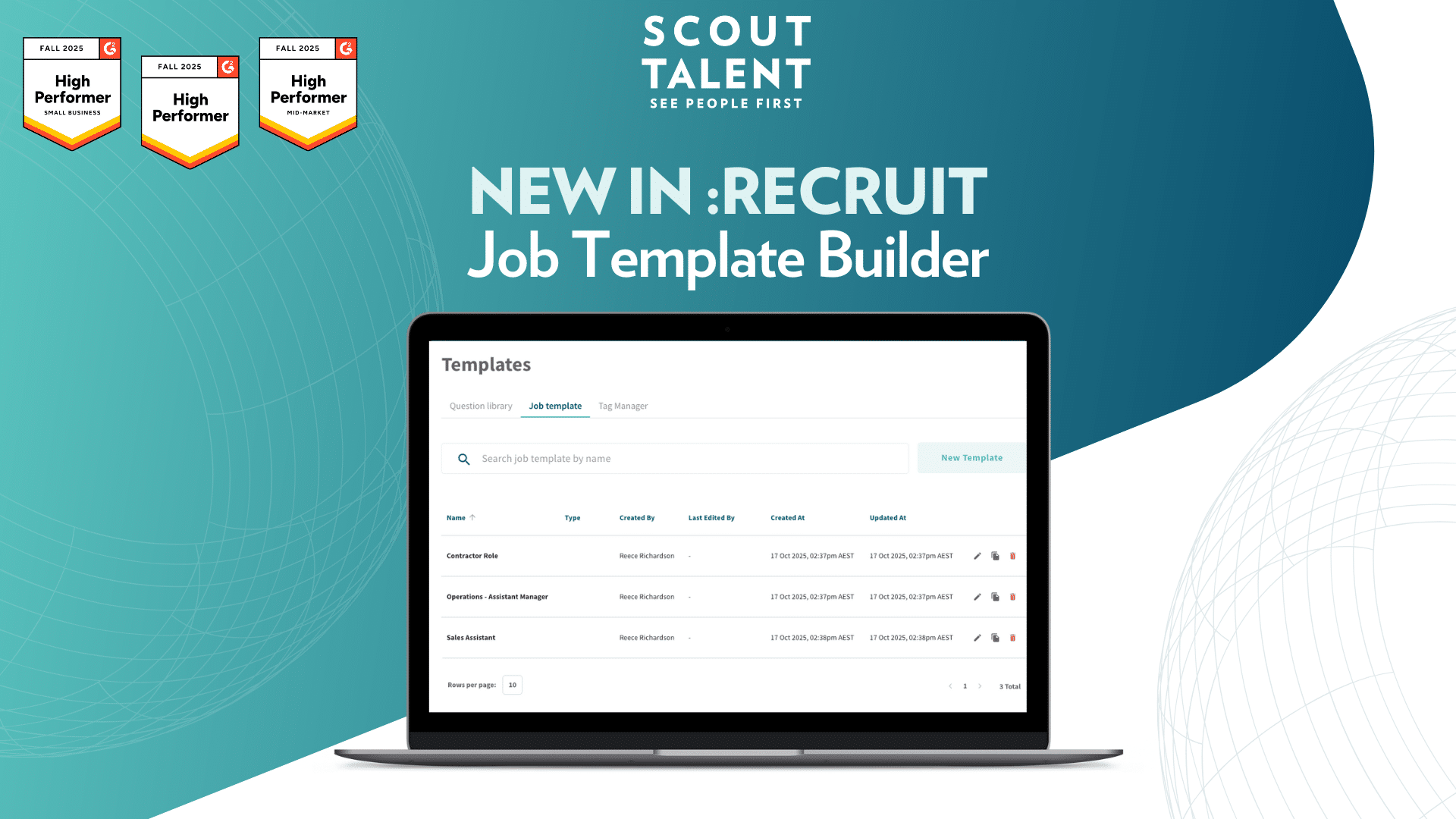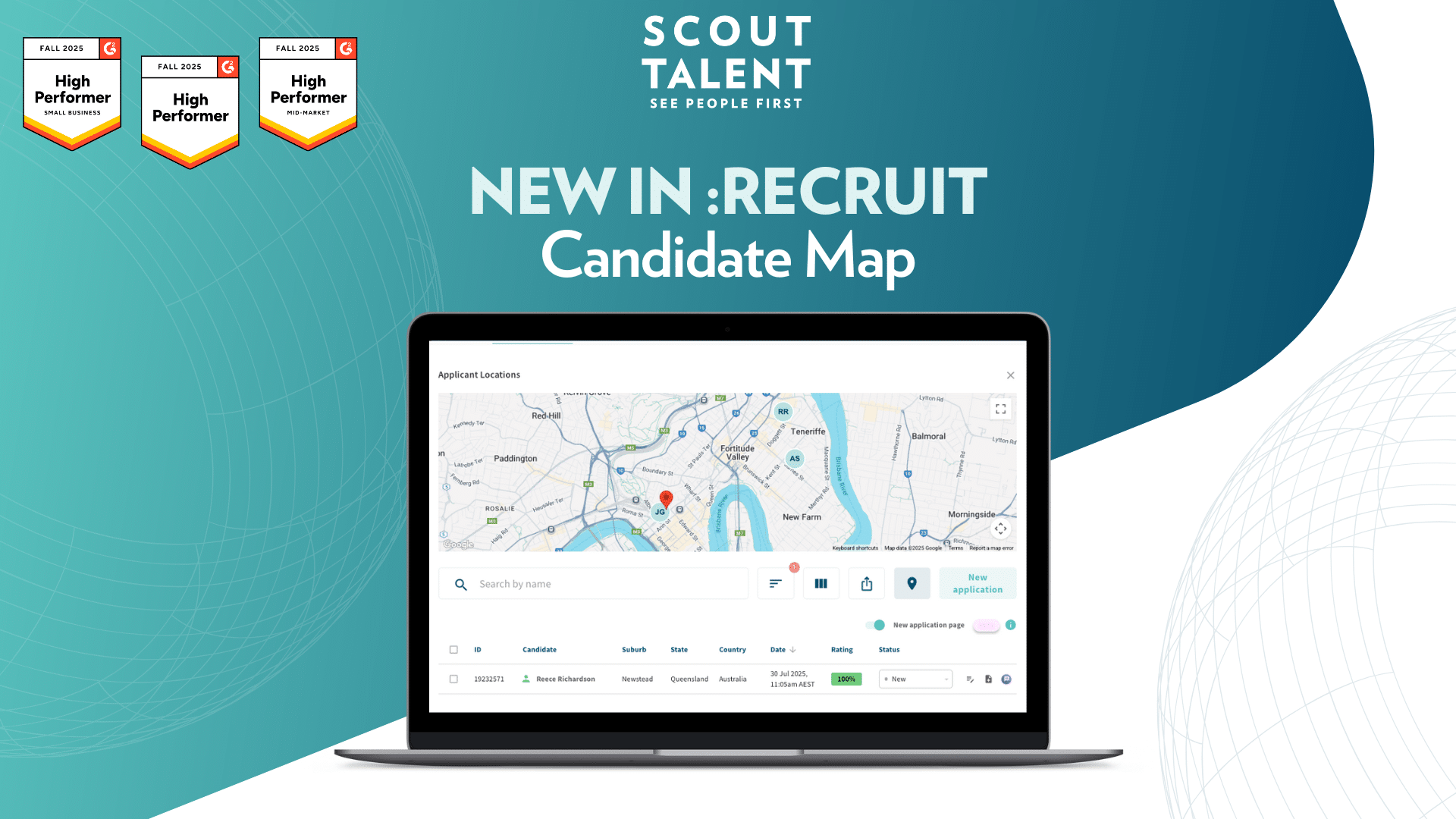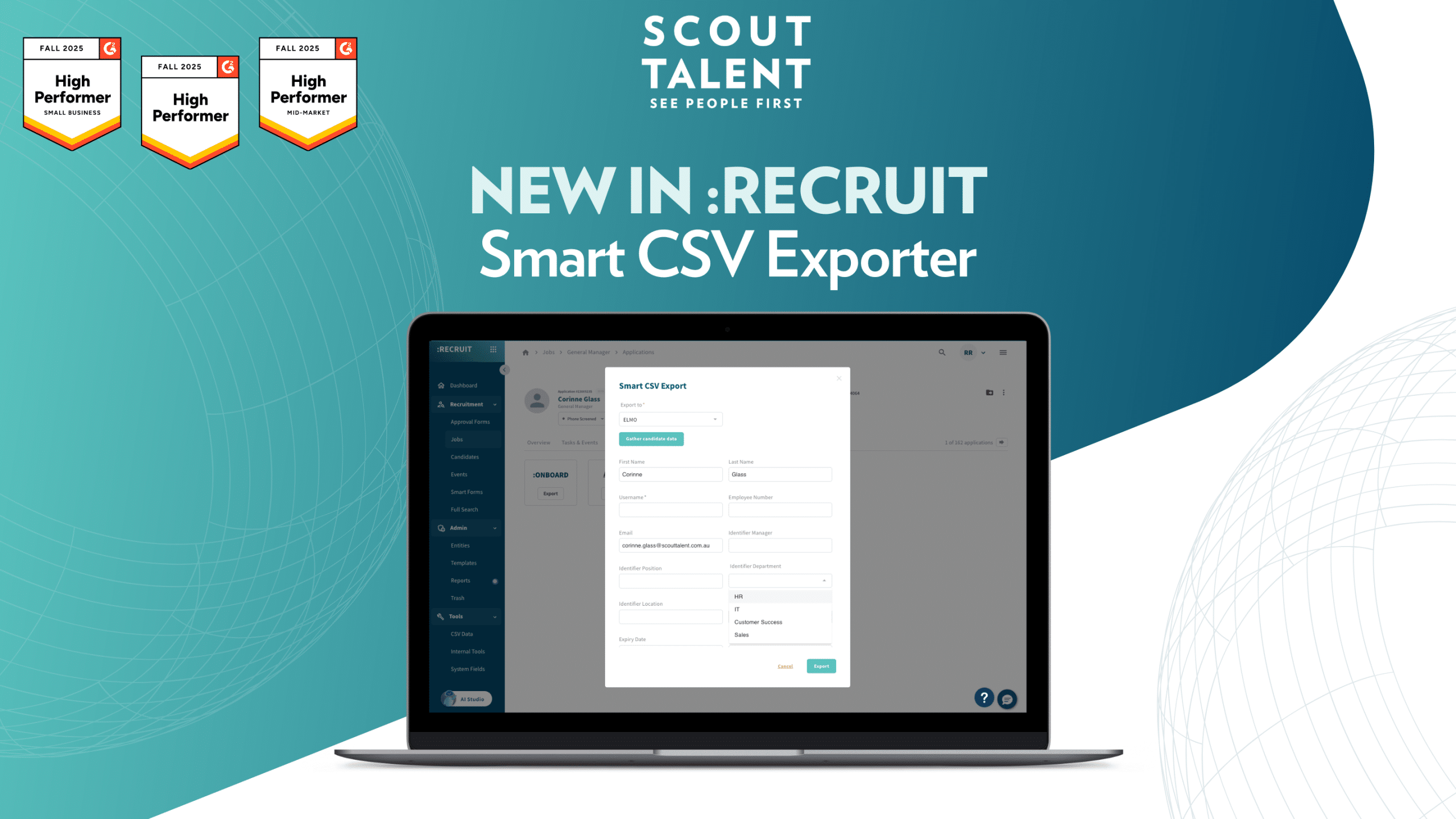Real Talent Is Harder to Spot in 2025… Here’s How to Cut Through the AI Noise
Think back to your last job posting.
You got flooded with applicants. Maybe even triple what you expected. On paper, half of them looked solid. Résumés were keyword-optimized, LinkedIn profiles stacked with endorsements, even some polished video submissions.
But how many of them could actually do the job?
AI tools like ChatGPT and Resume.io are now being used by candidates to generate job applications that sound perfect, even when the person behind them isn’t qualified. This shift has made it harder than ever to tell who’s the real deal and who’s just got good prompt engineering skills.
You spend weeks shortlisting, interviewing, onboarding… only to find out your “perfect hire” was a polished storyteller who can’t perform on the job. And in high-output, compliance-heavy industries like construction, engineering, mining, and manufacturing, that’s not just frustrating, it’s risky.
Let’s dig into why this is happening, and what to do about it now.
The 2025 Hiring Paradox: More Applicants, Fewer Qualified Candidates
This year, we’ve officially crossed into what I call “Agent-to-Agent Hiring.” A September 2025 article from The Atlantic states that the hiring process has turned impersonal and algorithm-driven. Applicants increasingly rely on AI tools (like ChatGPT and Resume.io) to pump out résumés at scale, while employers use AI systems – and even chatbots – for screening and interviews. In fact, Resume.io’s organic traffic surged 70% YOY, climbing from about 1.3M to 2.2M monthly visits.
In addition, according to the June 2025 article on the New York Post, AI recruiters are now screening job candidates for employers across North America, with some startups claiming they save up to 40 hours of recruiter time per role. What used to be done by a trained human is now being offloaded to algorithms trained to detect “fit” in milliseconds.
Moreover, here’s what we’re seeing:
- Only 4% of applicants make it to interview stages (SmartRecruiters)
- 83% of companies now use AI in hiring (The Interview Guys)
- 66% of U.S. adults say they wouldn’t apply for a role if they knew AI made the final call (Pew Research)
That’s a trust gap, and a quality gap, hitting recruiters from both sides.
At Scout Talent, we’re watching teams across Canada and the U.S. scramble to navigate the flood of AI-polished résumés. The challenge? AI can fake a résumé. It can’t fake performance.
Where Hiring Teams Are Going Wrong
We see four recurring mistakes, and they’re costing teams real money. Not to mention costs that are not quantifiable, such as time and effort that team members put into their recruitment process. These mistakes include:
1. Over-Relying on Keyword Filters
AI-generated résumés are built to game your ATS. Candidates use tools like Resume.io or Teal HQ to plug in your job description and auto-generate a “perfect match.” But that match? Often surface-level at best.
2. Delaying Verification
In compliance-heavy industries such as mining, construction, defence, engineering, healthcare, finance, and manufacturing, late verification isn’t just risky, it’s dangerous.
A May 2025 New York Post article revealed that nearly half of Gen Z applicants have lied on job applications, including falsifying experience, responsibilities, or job titles. Early this year, we recently screened a candidate for a senior finance role who looked flawless on paper – 12 years of experience, glowing references, clean résumé. But verification revealed a fake license, inflated experience, and phony referees. They’d already been passed through by multiple recruiters and nearly hired into a leadership role with budget authority.
As we covered in The Real Cost of a Bad Hire, these mistakes don’t just cost money. They erode trust, delay projects, and damage culture. Verification must move upstream.
3. Automating Too Much, Too Early
Some hiring processes now run on autopilot until the final interview. That means you’re wasting weeks on candidates who never had the skills in the first place, and losing the real ones to faster-moving teams.
4. Prioritizing Paper Over Behaviour
The résumé says “led a team of 12.” But when asked to explain how they handled a missed deadline? Vague, deflective, or full of buzzwords. Résumés might claim success. Behavioural questions reveal whether it’s true.
The REAL™ Framework: Your 2025 Playbook for Hiring with Confidence
In today’s job market, a polished résumé doesn’t guarantee a qualified candidate. With AI now helping candidates craft near-perfect applications, hiring managers need a way to cut through the noise and get to the truth.
That’s exactly why we use the REAL™ Framework. This four-part system helps hiring teams spot authentic, high-performing candidates by focusing on what actually matters, not just what looks good on paper.
Here’s how it works.

REAL™ Framework
R – Reveal the Person
Great hiring starts with great questions. Ask situational, story-driven prompts that force candidates to reflect on real experiences.
Try asking:
- “Tell me about a time your project went off track. What did you do?”
Then check for consistency across the three areas of truth:
- Résumé: Does their background show real career growth?
- Interview: Are their examples specific and believable?
- References: Do their referees back up the story?
If there are gaps or contradictions between those three, that’s a sign to dig deeper.
E – Evidence That Counts
Strong candidates provide proof. Weak ones stay vague.
Ask for measurable outcomes, timelines, team size, and the tools they used. A top performer can walk you through a project in detail, not just throw out buzzwords.
Then, verify what they’ve told you.
Confirm credentials, call referees, and log everything in your ATS or shared system. If something doesn’t check out, you’ll be glad you caught it early.
A – Agility in Action
Résumés show history, but agility shows if someone can deliver today. In 2025, adaptability is essential with tighter timelines and leaner resources.
Test this with “what-if” scenarios:
- “If your deadline was moved up by two weeks, what would you do?”
- “If resources were cut in half, how would you adapt?”
Then back it up with validation. For technical roles, use skills tests or work samples. For leadership roles, run behavioural or psychometric assessments to see how they perform under pressure.
The key question is: Can this candidate step in and deliver immediately? If not, you’ve just saved your team from a costly mis-hire.
L – Long-Term Fit
Skills get someone hired, but mindset keeps them growing with your team. To test long-term fit, ask forward-looking questions:
- “What’s the most valuable thing you learned last year?”
- “What kind of team helps you do your best work?”
Use structured interview guides and scorecards to keep the process consistent. Add behavioural testing to measure curiosity, learning mindset, and cultural alignment.
The final check is simple: Can you see this person thriving in 12 months or more? If the answer is yes, you’ve found more than a hire… you’ve found an investment.
Final Takeaway: AI Is Here to Stay, But So Are We
AI is not going away, and neither is the flood of polished applications. This is just part of the ever-evolving landscape in recruitment. The real risk is not too few candidates, but too many that look good without being qualified. In 2025, the most expensive mistake a company can make is hiring the wrong person… because the cost is more than salary. It is lost trust, delayed projects, safety risks, and culture damage that lingers long after the person is gone.
The good news is you do not have to hire in the dark. The REAL™ Framework gives you a structure to cut through the noise and focus on what actually matters: people who can perform today and grow with you tomorrow.
Want to Audit Your Hiring Process?
Whether you need candidate verification, interview support, or full recruitment campaign management, the Scout Talent team combines AI-powered tools with real human expertise so you can hire with confidence.
👉 Book a Free Hiring Consultation
Let’s review your current process together, stress-test it against AI-generated applicants, and show you where the red flags might be slipping through.
Because in 2025, the only way to win the hiring game is to make sure you’re not just filling seats – you’re finding real talent.
Frequently Asked Questions
Q: How do I know if a résumé was written by AI?
Look for vague, buzzword-heavy language with no clear accomplishments. Ask for specific timelines, metrics, and examples during interviews.
Q: When should I run verification checks?
Move it upstream. Conduct reference checks, license and certification validation, and identity checks before the offer stage in compliance-heavy or leadership roles. This prevents late-stage reversals and protects team safety and budgets.
Q: Can AI help with recruitment?
Yes, but only when paired with human insight. Use AI to speed up admin, especially on repetitive tasks. Use humans to assess culture fit, behaviour, and truth. Human behaviour is complex, and only people can truly evaluate the qualities that go beyond what algorithms can measure.
Q: What are practical steps to reduce interview fraud and identity scams?
Use live video identity checks, proctored skills tests, and structured references sent to verified company domains. If it’s in an in-office or onsite position, conduct an in-person interview instead of virtual. Watch for red flags such as mismatched time zones, headset latency, or scripted delays. Market reports warn of growing identity fraud and deepfake risks in hiring.
Written by Jeff Rios
Head of Talent Acquisition, Scout Talent | Recruitment Strategist
Connect with me on LinkedIn
Follow Scout Talent on LinkedIn
Explore Scout Talent Services
About Jeff Rios

Jeff Rios, based in Vancouver, BC, Canada, is the Head of Talent Acquisition at Scout Talent North America and a global leader in recruitment strategy, employer branding, and AI-enabled hiring innovation. Jeff specializes in high-volume recruitment, RPO, hiring workflows, and AI-powered processes that help organizations hire faster, reduce risk, and increase accuracy.
With global recruitment experience in Canada, US, and Australia across Construction, Mining, Manufacturing, Municipal Government, Indigenous and First Nations communities and organizations, and the Not-for-Profit sector, Jeff leads high-impact recruitment campaigns and helps employers navigate modern hiring challenges.
At Scout Talent, Jeff contributes to the evolution of the company’s talent acquisition platform, including Scout :Recruit (ATS + CRM), :Essentials, Scout AI Suite, :Onboard, :Engage, and Scout Learning, and supports services such as Recruitment Marketing, Employer Branding, Talent Engagement, and Recruitment Process Outsourcing (RPO).
Focused on innovation and long-term hiring success, Jeff helps organizations modernize their recruitment processes, adopt AI responsibly, and build high-performing teams that thrive in today’s competitive labour market.





